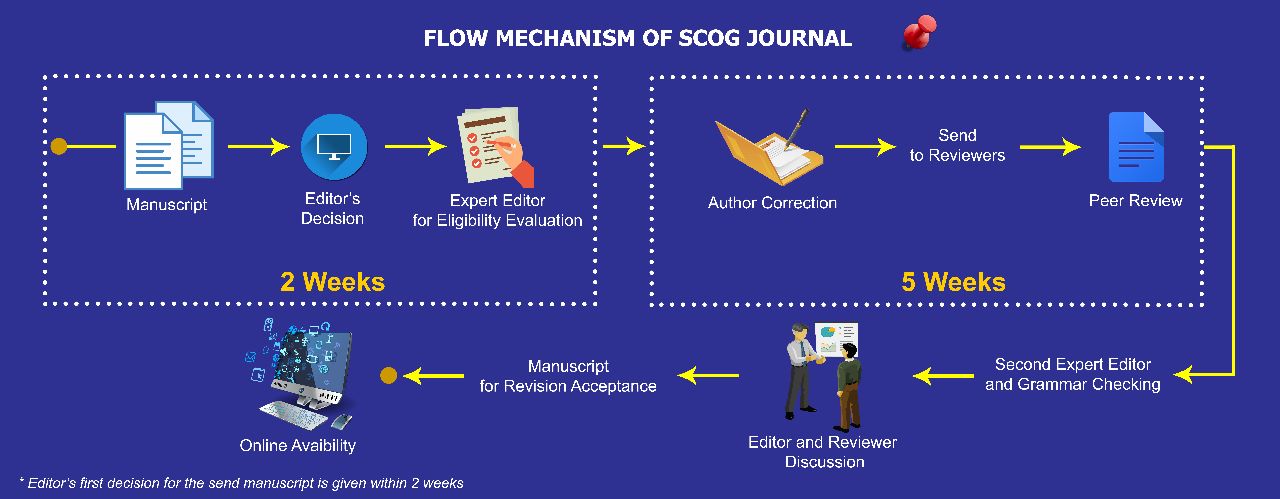CONVERSION OF CO2 TO HYDROCARBON SYNFUEL BY UTILIZING NUCLEAR HYDROGEN COGENERATION
Abstract
A study of the utilization of hydrogen cogeneration with nuclear energy as a technology for the conversion of CO2 into synthetic liquid hydrocarbon fuels has been carried out. The aim of the study is to understand the conversion of CO2 and H2 into synthetic fuels, as well as the role of nuclear hydrogen cogeneration for the production of hydrogen and as a source of process heat energy. The method used is literature study based on the results of existing research. Conventionally, synthetic fuel production from coal is produced through coal gasification process, followed by reacting synthesis gas (mixture of CO and H2) in FT reactor to synthesis fuel. In this study, we studied the production of synthetic fuels with CO2 and H2 raw materials. CO2 comes from emissions of coal-fired plants, whereas H2 is produced by nuclear hydrogen cogeneration systems. The results show that compared to conventional processes, CO2 and H2-based processes supported by coal cogeneration systems provide significant advantages in terms of CO2 emissions. The process based on coal gasification and nuclear cogeneration, capable of reducing emissions by up to 75% and saving up to 40% of coal consumption. While the process based only on CO2 and nuclear hydrogen cogeneration (without coal gasification), teoretically can operate witout any CO2 emission at all. Even this process can captured and utilize CO2 emissions from coal fired plant, and use it as a raw material for the process.
Keywords
Full Text:
PDFReferences
Aresta, M., Dibenedetto, A., Angelini, A., 2013, Review Article: The changing paradigm in CO2 utilization, Journal of CO2 Utilization, Vol. 34, Page 6573.
Bicer, Y., Dincer, I., 2017, Life cycle assessment of nuclear-based hydrogen and ammonia production option: A comparative evaluation, International Journal of Hydrogen Energy, Vol. 42, Issue 33, Pages 21559-21570.
Borgard, J. M., Tabarant, M., 2011, CO2 to fuel using nuclear power: the French case, Energy Procedia, Vol. 4, Page 21132120.
Botha, F. J., 2012, Simulation of a syngas from coal production plant coupled to a high temperature nuclear reactor, Stellenbosch University, 2012.
Chiuta, S., 2010, The potential utilization of nuclear hydrogen for synthetic fuels production at a coal-to- liquid facility, North-West Univer-sity, Potchefstroom, South Africa.
Chen, Q.Q., Tang, Z.Y., Lei,Y., Sun, Y. H., Jiang, M.H., 2015, Feasibility analysis of nuclear-coal hybrid energy systems from the perspective of low carbondevelopment, Applied Energy, Vol. 158, Pages 619-630
Konig, D.H., Bauck, N., Dietrich, R.U., Worner, A., 2015, Simulation and evaluation of a process concept for the generation of synthetic fuel from CO2 and H2, Energy, Vol. 91, Page 833-841.
Locatelli, G., Mancini, M., Todeschini, N., 2013, Generation IV nuclear reactors: Current status and future prospects, Energy Policy, Vol. 61, Page 15031520.
Futterer, M.A., Fu, L., Sink, C., Groot, S., Pouchon, M., Kim, Y.W., Carre, F., Tachibana, Y., 2014, Status of the very high temperature reactor system, Progress in Nuclear Energy, Vol. 77, Page 266-281.
INL-DOE, 2010, Technical Evaluation Study Project No. 23843: N uclear-Integrated Ammonia Production Analysis, Idaho National Labo- ratory.
Verfondern, K., 2013, Overview of Nuclear Cogeneration in High-Temperature Industrial Process Heat Applications, OECD-IAEA Workshop, April 4-5, 2013, Paris
Choi, Y. H., Jang, Y.J., Park, H., Kim, W.Y, Lee, Y.H.,
Choi, S.H., Lee, J.S., 2017, Carbon dioxide Fischer- Tropsch synthesis: A new path to carbon-neutral fuels, Applied Catalysis B: Environmental, Vol. 202, Page 605610.
El-Genk, M.S., Tournier, J.P., 2017, Reliable and safe thermal coupling of Generation-IV VHTR to a hydrogen fuel production complex, Thermal Science and Engineering Progress, Vol. 3, Pages 164-170.
Faberi, S., Paolucci, L., 2014, Methanol: a future transport fuel based on hydrogen and carbon dioxide? Economic viability and policy options, Science and Technology Options Assessment European Parliamentary Research Service.
Graves, C. R., 2010, Recycling CO2 into Sustainable Hydrocarbon Fuels: Electrolysis of CO2 and H2O, Columbia University, 2010.
Hong, S., Bradshaw, J.A., Brook, B.W., 2015, Global zero-carbon energy pathways using viable mixes of nuclear and renewables, Applied Energy, Volume 143, Pages 451-459
IAEA, 2012, IAEA-TECDOC-1682: Advances in Nuclear Power Process Heat Applications, International Atomic Energy Agency, Vienna.
IAEA, 2013, Hydrogen production using nuclear energy, IAEA Nuclear Energy Series No. NP-T-4.2, IAEA Publ. 2013.
Jiang, Z., 2010, Review: Turning carbon dioxide into fuel, Phil. Trans. R. Soc. A, Vol. 368, Page 33433364
Khamis, I, Koshy, T., Kavvadias, K.C., 2013, Opportunity for Cogeneration in Nuclear Power Plants, The 2013 World Congress on Advances in Nano, Biomechanics, Robotics, and Energy Research, Seoul 2013.
Kreutz, T., 2011, Prospects for producing low carbon transportation fuels from captured CO2 in a climate constrained world, Energy Procedia, Vol. 4, Page 21212128.
Lanjekar, K., Gharat, N., Thakare, D., 2011, Green conversion technology for carbon dioxide utilization
A Short Review, Interna-tional conference on current trends in technology, Nuicone, 2011.
Li, L., Zhao, N., Wei, W., Sun, Y., 2013, A review of research progress on CO2 capture, storage, and utilization in Chinese Academy of Sciences, Fuel, Vol. 108, Page 112130.
Merajin, M. T., Sharifnia, S., Mansouri, A.M., 2014, Process modeling and optimization of simultaneous direct conversion of CO2 and CH4 greenhouse gas mixture over TiO2/webnet photocatalyst, J. of the Taiwan Institute of Chem. Eng., Vol. 45, Page 869879.
Noguchi, H., Takegamia, H., Kasaharaa, S., Tanaka, N., Kamiji, Y., Iwatsuki, J., Aita, H., Kubo, S., 2016, R&D status in thermo-chemical water-splitting hydrogen production iodine-sulfur process at JAEA, 5th International Symposium on Innovative Nuclear Energy Systems, INES-5, 31 October 2 November, 2016, Ookayama Campus, Tokyo Institute of Technology, JAPAN
Patzek, T.W., Croft, G. D., 2009, Potential for Coal- to-Liquids Conversion in the United States Fischer Tropsch Synthesis, Natural Resources Research, Vol. 18, No. 3.
Prokofyeva, A., Grtler, C., 2014, CO2 as building block for the chemical industry, United Nations Climate Change Conference, Bonn, Germany, 2014.
Ravanchi, M. T., Sahebdelfar, S., 2014, Carbon dioxide capture and utilization in petrochemical industry: potentials and challenges, Appl Petrochem Res., Vol. 4, Page 6377.
Salimy, D. H., 2014, Nuclear cogeneration application for water splitting at CO2 conver-sion to be urea fertilizer, JPEN Vol. 16, No. 2, Dec. 2014. (in Bahasa)
Salimy, D. H., Alimah, S., 2015, Nuclear cogeneration application of hydrogen production from water for CO2 conversion to be methanol, JPEN Vol. 17, No. 2, Dec. 2015. (in Bahasa)
Schultz, K., Gorensek, M., Hering, J., 2012, Nuclear power for the production of carbon free energy and fuels. In: Muradov, N., and Veziroglu, V., (Eds) Carbon neutral fuels and energy carriers, CRC Press, Boca Raton, Page 203-289.
Stangeland, K., Kalai, D., Li, H., Yu, Z., 2017, CO2 methanation: the effect of catalysts and reaction conditions, Energy Procedia, Vol. 105, Pages 2022- 2027
Telsnig, T., Tomaschek, J., Ozdemir, E.D., Bruchof, D., Eltrop, L., 2013, Assess-ment of selected CCS technologies in electricity and synthetic fuel production for CO2 mitigation in South Africa, Energy Policy, Vol. 63, Page 168-180.
Verfondern, K., Yan, X., Nishihara, T., Allelein, H.J., 2017, Safety concept of nuclear cogeneration of hydrogen and electricity, International Journal of Hydrogen Energy, Vol. 42, Issue 11, Pages 7551-7559.
Xu, J., Yang, Y., Li, Y.W., 2013, FischerTropsch synthesis process development: steps from fundamentals to industrial practices, Current Opinion in Chemical Engineering, Vol. 2, Issue 3, Pages 354-362.
Yan, X., Noguchi, H., Sato, H., Kunitomi, K., Hino, R., 2014, A hybrid HTGR system producing electricity, hydrogen and such other products as water demanded in the Middle East, Nuclear Engineering and Design, Vol. 271, Page 2029.
DOI: https://doi.org/10.29017/SCOG.41.1.353

This work is licensed under a Creative Commons Attribution-NonCommercial-NoDerivatives 4.0 International License.






